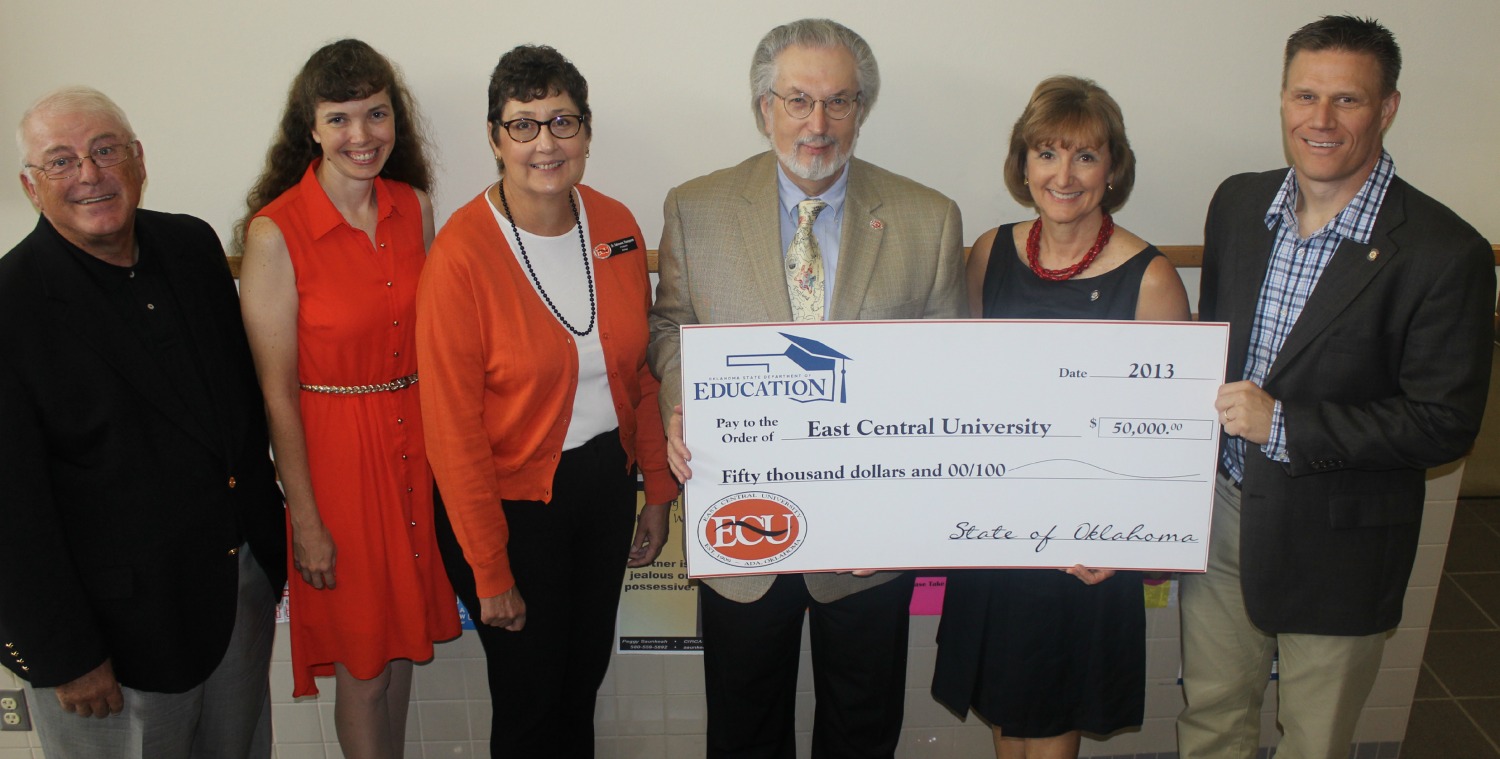ADA – Pushing for the importance of STEM (science, technology, engineering and mathematics) education, Oklahoma State Senator Susan Paddack and Oklahoma House of Representative Todd Thomsen, along with East Central University have accelerated the process.
Through the work of many, ECU has obtained a $50,000 grant from the Oklahoma State Department of Education to be applied toward ECU’s two science and engineering fairs – the East Central Oklahoma Regional Science Fair and the Oklahoma State Science and Engineering Fair – and all of the other International Science and Engineering Fairs and associated regional fairs in Oklahoma.
“When the recession started in 2009, the state of Oklahoma cut many discretionary programs. Unfortunately one of the programs cut was the Oklahoma State Science and Engineering Fair,” said ECU President John Hargrave. “Since that time, we have worked diligently to convince the state of Oklahoma that this important STEM initiative needs to be returned. We’re pleased that the state has agreed to reinitiate the funding for the state engineering and science fairs. East Central University is proud to have hosted the science fair for over 40 years. We’re working on ways to make it bigger and better than ever.”
The focus on funding for STEM initiatives is an absolute necessity, according to Paddack and Thomsen.
“We see the need for more students to be involved in STEM and we’re pushing for more opportunities,” said Paddack. “This gives students the opportunity to put their ideas to work. We’re so excited for the additional funding that we have to give to them and we’re excited that the additional funds will help (the science fairs) grow.”
The fairs have managed to be held from 2011-2013, but with extreme limited funding.
“The emphasis on STEM is continually growing in the state and in the nation. It only makes sense that science and technology be funded,” said Thomsen. “Science is a key component to innovation and it gives new avenues for innovators and creators.”
Thomsen calls STEM significant for the future of the state and country and praised President Hargrave for his actions in helping to obtain the funding.
“All students statewide should be in awe of President Hargrave for the efforts he put into this, advocating for science fairs,” Thomsen said. “Even though the fairs are held at ECU, his heart was for the impact it would have for the state. His diplomacy and tact were the reasons they (state representatives and senators) were receptive.”
Hargrave praised Paddack and Thomsen for their efforts as well.
“Senator Paddack and Representative Thomsen worked tirelessly to help us receive this funding. I’m not sure they could have worked any harder,” said Hargrave. “I’m pleased that they value the importance of STEM education and put forth such a wholehearted approach and effort to get this done.”
Rahmona Thompson, professor of biology and director of both science and engineering fairs, says the grant will make an impact on the operations of the 2014 spring fairs as well as enhance the experience of those participating.
According to Thompson, the funds will not only benefit ECU’s two science and engineering fairs, but other regional fairs within the state.
“It’s fabulous to have a stable funding source this year and I would like to thank President Hargrave, Senator Paddack and Representative Thomsen,” Thompson said.
Thompson, with the help of Nancy Thomason, director of the Office of Sponsored Programs and Research, submitted the grant proposal.
Last year’s fairs were completely funded by ECU, while a stimulus grant, from former Oklahoma Gov. Brad Henry, helped to fund them the previous year.
The successes of past fairs have been plentiful.
Eleven Oklahoma students were certified to present at the Intel International Science and Engineering Fair in Pittsburgh, Pa. in 2013.
More than 8,000 participants from 200 school participated in regional science fairs and 64 Oklahoma schools participated in the 2012 Oklahoma State Science and Engineering Fair. Also represented were 11 private schools and three home schools.
Categories have included: biochemistry, medicine and health science, physical sciences, earth and space sciences, behavioral and social sciences, engineering, mathematics and computer science, environmental sciences, zoology and botany, and microbiology.
-ECU-

